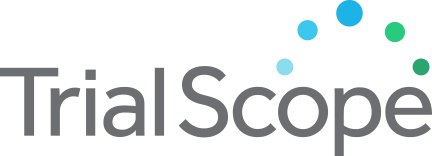Testing the Use of Combination Therapy in Patients With Persistent Low Level Acute Myeloid Leukemia Following Initial Treatment, The ERASE Study (A MyeloMATCH Treatment Trial)
Study Purpose
This phase II MyeloMATCH treatment trial compares cytarabine versus (vs.#46;) cytarabine and venetoclax vs.#46; liposome-encapsulated daunorubicin-cytarabine and venetoclax vs.#46; azacitidine and venetoclax for treating patients who have residual disease after treatment for acute myeloid leukemia (AML). Cytarabine is in a class of medications called antimetabolites. It works by slowing or stopping the growth of cancer cells in the body. Venetoclax is in a class of medications called B-cell lymphoma-2 (BCL-2) inhibitors. It may stop the growth of cancer cells by blocking Bcl-2, a protein needed for cancer cell survival. Liposome-encapsulated daunorubicin-cytarabine is a drug formulation that delivers daunorubicin and cytarabine in small spheres called liposomes, which may make the drugs safer or more effective. Azacitidine is a drug that interacts with DNA and leads to the activation of tumor suppressor genes, which are genes that help control cell growth. This study may help the study doctors find out if the different drug combinations are equally effective to the usual approach of cytarabine alone while requiring a shorter duration of treatment. To decide if they are better, the study doctors will be looking to see if the study drugs lead to a higher percentage of patients achieving a deeper remission compared to cytarabine alone.
Recruitment Criteria
|
Accepts Healthy Volunteers
Healthy volunteers are participants who do not have a disease or condition, or related conditions or symptoms |
No |
|
Study Type
An interventional clinical study is where participants are assigned to receive one or more interventions (or no intervention) so that researchers can evaluate the effects of the interventions on biomedical or health-related outcomes. An observational clinical study is where participants identified as belonging to study groups are assessed for biomedical or health outcomes. Searching Both is inclusive of interventional and observational studies. |
Interventional |
| Eligible Ages | 18 Years - 59 Years |
| Gender | All |
Trial Details
|
Trial ID:
This trial id was obtained from ClinicalTrials.gov, a service of the U.S. National Institutes of Health, providing information on publicly and privately supported clinical studies of human participants with locations in all 50 States and in 196 countries. |
NCT05554419 |
|
Phase
Phase 1: Studies that emphasize safety and how the drug is metabolized and excreted in humans. Phase 2: Studies that gather preliminary data on effectiveness (whether the drug works in people who have a certain disease or condition) and additional safety data. Phase 3: Studies that gather more information about safety and effectiveness by studying different populations and different dosages and by using the drug in combination with other drugs. Phase 4: Studies occurring after FDA has approved a drug for marketing, efficacy, or optimal use. |
Phase 2 |
|
Lead Sponsor
The sponsor is the organization or person who oversees the clinical study and is responsible for analyzing the study data. |
National Cancer Institute (NCI) |
|
Principal Investigator
The person who is responsible for the scientific and technical direction of the entire clinical study. |
Ehab L Atallah |
| Principal Investigator Affiliation | ECOG-ACRIN Cancer Research Group |
|
Agency Class
Category of organization(s) involved as sponsor (and collaborator) supporting the trial. |
NIH |
| Overall Status | Not yet recruiting |
| Countries | |
|
Conditions
The disease, disorder, syndrome, illness, or injury that is being studied. |
Acute Myeloid Leukemia, Acute Myeloid Leukemia Arising From Previous Myelodysplastic Syndrome, Acute Myeloid Leukemia Arising From Previous Myeloproliferative Neoplasm, Acute Myeloid Leukemia Post Cytotoxic Therapy, Secondary Acute Myeloid Leukemia |
Contact Information
This trial has no sites locations listed at this time. If you are interested in learning more, you can contact the trial's primary contact:
For additional contact information, you can also visit the trial on clinicaltrials.gov.
Site by: Kaleidoscopic

